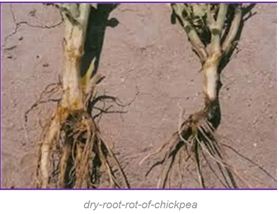

25th February 2022 (6 Topics)
Climate change likely to favor soil-borne plant pathogens for diseases like dry root rot of chickpea in future
Context
Indian scientists decode factors causing DRR disease in chickpea crop.
About
About Chickpea:
- Chickpea is an essential crop for protein nutrition and is grown around the world in rain-fed conditions.
- However, chickpea cultivation is under threat due to emerging diseases favored by drought stress.
- Chickpea (Cicer arietinum L.) also known as garbanzo is an integral part of many Asian and sub-Saharan countries’ food security programs and this region accounts for more than 95% of the global chickpea production.
About Dry root rot (DRR) disease:
- It is a soil-borne disease initiated by soil-borne fungal threads or spores of the fungus Macrophomina phaseolina.
- Dry root rot (DRR) disease causes reduced vigour, dull green leaf colour, poor new growth, and twig dieback.
- If extensive root damage occurs, the leaves suddenly wilt and dry on the tree.
- The symptoms appear suddenly when ambient temperatures are between 30-35°
- The increasing global average temperature is leading to appearance of many new plant disease-causing pathogens at a rate hitherto unheard of.
- At present, the central and southern states of India have been identified as the prime chickpea DRR hotspots accounting for overall 5 to 35 per cent incidences of the disease.
More Articles



